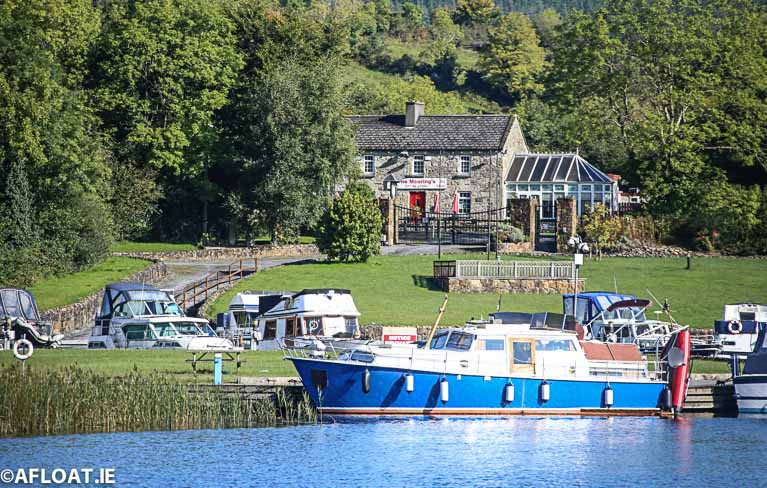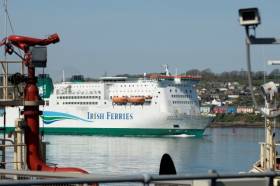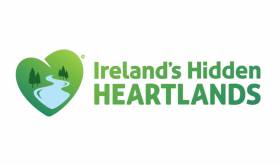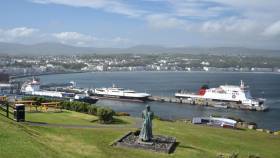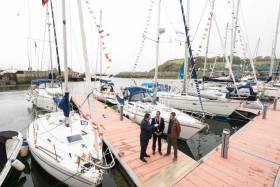Displaying items by tag: tourism
Lighthouse tourism in Ireland has significantly increased, with a 60% rise in overnight stays in such facilities throughout the country since 2019, according to the Great Lighthouses of Ireland tourism initiative. Last year, over 622,000 people visited lighthouses and lighthouse tourism experiences throughout the country.
The Great Lighthouses of Ireland partnership, established in 2015 and led by Irish Lights, is composed of public, private, and community sector partners, and aims to preserve maritime heritage throughout the country. The partnership will host a three-day conference in Belfast from October 8 to plan future growth for lighthouse tourism throughout the country.
Bobby Kerr, chairperson of the Great Lighthouses of Ireland partnership, said, “Lighthouses have such a special and universal appeal and are located in some of our island’s most breathtaking coastal landscapes. Growing lighthouse tourism has multiple benefits. It’s a positive and sustainable way to preserve our maritime heritage. It can provide income and jobs for coastal communities and increase visitor numbers to the island of Ireland.”
 Blackhead Lighthouse in County Antrim Photo: Malcolm McGettigan
Blackhead Lighthouse in County Antrim Photo: Malcolm McGettigan
The Great Lighthouses of Ireland partnership has estimated that it provided an economic benefit of €16.8m in under four years and supported over 400 jobs before the COVID-19 pandemic. Irish Lights CEO Yvonne Shields O’Connor stated that the partnership’s recovery is underway and that it is well-positioned for the future.
“We share a vision and collaborate as partners to create truly inspiring and transformative visitor experiences. It’s time now to be more ambitious about what we can achieve together,” said O’Connor.
 The Titanic Light, Belfast, is part of the Great Lighthouses of Ireland tourism initiative
The Titanic Light, Belfast, is part of the Great Lighthouses of Ireland tourism initiative
The conference, which is scheduled for October 8-10, will explore a number of lighthouse-related projects throughout Northern Ireland, with the goal of developing sustainable visitor experiences based on maritime heritage and culture throughout the region.
Final Cruise Call to Belfast Harbour Marks Successful Season
A cruiseship that arrived in Belfast Harbour today marks the final call (Afloat adds Borealis) in a year that Cruise Belfast, the partnership between the port and Visit Belfast is celebrating a strong cruise season with 141 calls made in 2022.
This year’s successful cruise season (April-November), saw more than 50 different ships from 33 cruise lines dock in the city, carrying more than 250,000 visitors who came ashore to explore Northern Ireland’s award-winning tourist attractions.
Among the visiting vessels were 18 ships making their inaugural call to the shores of Belfast, including the ‘Enchanted Princess’ and ‘Island Princess’ from Princess Cruises and the ‘Ambassador Ambience’ from Ambassador, a new British cruise line.
Reflective of Northern Ireland’s increasing popularity as a tourist destination, and Belfast’s position as one of the UK and Ireland’s most vibrant and exciting city ports of call, many cruise liners made a return to Belfast in 2022, including the Disney Cruise Line's 'Disney Magic’ (above) which arrived with some 2,700 passengers and crew on board.
Reflecting on the success of the cruise season, Michael Robinson, Belfast Harbour’s Port Director, said: “This year’s busy cruise schedule signals a comeback for the tourism industry following two difficult years, and we were delighted to have many prestigious cruise lines docking in Belfast. We hosted more than 50 different ships, including 18 vessels on their first call to the city, and there were days over the summer when we had three ships in the Port.
“This is a testament to the appeal of Belfast as a destination, as well as our facilities, support, service and warm welcome".
“Belfast Harbour celebrated our 175th Anniversary this year, and it has been a fantastic opportunity to reflect on the transformation of the Port as well as the wider City over the last few decades. The cruise industry has been key to the growth and development of our tourism industry and the future looks bright for Belfast. We are excited to be working on next year’s schedule, and we hope to welcome even more first time and returning visitors to our shores, further cementing the City’s place as a must-see cruise destination.”
Mary Jo McCanny, Director of Visitor Servicing at Visit Belfast, added: “With our visitor numbers increasing again following the pandemic, this cruise season has been as runaway success as we welcomed both international and first-time visitors to Northern Ireland. Belfast has built a strong reputation as a welcoming and exciting cruise destination and this busy season is reflective of the strong working relationships that Cruise Belfast has with global cruise operators.
“Welcoming over 250,000 passengers to the Port, the visitor services teams worked tirelessly to provide a first-class reception for visitors from around the world and directing them to our wide range of quality tourist experiences.“As we prepare for 2023, we will maintain our ongoing partnerships with Belfast Harbour, supported by Tourism NI, to drive the tourism market in Northern Ireland and continue to promote the award-winning tourist attractions across the region.”
Tourist Numbers Visiting Ireland Still 9% Below 2019 Levels
International tourists of nearly 900,000 visited Ireland in September, down 9% on the same month in 2019.
New figures from the Irish Tourism Industry Confederation (ITIC) show so far this year, visitor numbers are down 20%.
338,000 people visited from continental Europe last month, down 5% on 2019 - making it the strongest performing market.
Meanwhile, the North American market continued to recover, with 230,000 visitors during the month.
The ITIC said it was concerned that the recovery of the sector would be threatened by soaring cost inflation, the energy crisis and supply constraints.
RTE News has more from the ITIC
Remote and “tranquil” cabin cruiser moorings, kayak trails, canal walks and greenways form part of a €76.5 million tourism plan for the river Shannon published today.
As Times.ie reports today, the ten-year masterplan is the first such “whole river” approach to the entire Shannon region, according to Minister for Tourism Catherine Martin and Minister for Local Government and Heritage Darragh O’Brien.
The 360km waterway is the longest river in Ireland and Britain, and runs through ten counties – all of which are involved in the strategy drawn up by Fáilte Ireland and Waterways Ireland.
Prone to periodic flooding, the river also has untapped potential as an international and national tourism destination, according to Fáilte Ireland which plans to invest 2.1 million euro in the waterway this year.
As Afloat reported yesterday, the masterplan identifies seven priority areas, and three key themes within Fáilte Ireland’s “Hidden Heartlands” brand - “The Shannon, Mighty River of Ireland”, “Shannon Journey’s” and “Adventures and The Natural Timeless Shannon”.
Redevelopment of Connaught harbour in Portumna, Go Galway; a “canoe step” for access to Lough Derg; a new cycle and walking trail linking Connaught harbour and the Lough Derg “blueway”; and extra cruise berths in several counties and in Athlone, Co Westmeath are among initial projects allocated for funding.
Fáilte Ireland’s head of product development – activities Fiona Monaghan said that a pilot project to develop “remote” or “tranquillity” moorings for cabin cruisers would focus on three such locations on Lough Derg, three on Lough Ree and three on the upper Shannon.
The plan also involves supporting a number of tourism businesses along the river and the Shannon-Erne waterway.
The entire ten-year plan has been costed at 76.5 million euro, Monaghan said, with a focus on “quality, rather than quantity”, and a sensitive approach to the river’s environment.
Strategic environmental assessments and public consultation have already taken place, she said.
Minister for Tourism Catherine Martin said that “this unique area is highly valued for its special environmental qualities and biodiversity and is home to many unique species, and native flora and fauna”.
“ It will be a haven for on-water and off-water experiences offering a range of ways to be active in nature, in a sustainable manner. The Shannon will invite the visitor to slow down, stay longer and to engage with local communities,” she said.
Martin said the region will be developed as a “model of ecologically sustainable tourism”, with a “leave no trace” code of practice and a “slow travel” approach for visitors.
Other elements of the plan include the development a water-based “activity hub” at Red Bridge (Ballymahon), Co. Longford, due to its proximity to Lough Ree, Ballymahon and the Center Parcs complex.
Ten additional cruiser berths will be developed in Roosky, Co Roscommon, and there will be additional car parking, landscaping, and interpretation of the waterways “industrial heritage”.
Read more on Times.ie here
Shannon Tourism Masterplan Public Consultation to Continue Online Amid Covid-19 Restrictions
Waterways Ireland is continuing its public consultation on its Shannon tourism masterplan but has urged members of the public to respond online.
The cross-border authority has published its draft masterplan and associated environmental report as part of an 18-month strategy to develop tourism along the Shannon corridor over the next decade to 2030.
It is asking members of the public to review documents online and make any submissions through an online survey on link here
The documents online include the executive summary, the draft masterplan, the environmental report, baseline study, appropriate assessment screening and Natura impact reports.
It says that people who wish to review documents in local authority offices should be aware that arrangements may change locally due to the Covid-10 response, and that vigilance is required in relation to physical distancing.
The plan led by Waterways Ireland, with Fáilte Ireland, aims to “reposition the combined Shannon Navigation and Shannon-Erne waterway as a key tourism destination within Ireland’s Hidden Heartlands, identifying world-class visitor experiences based on the region’s natural and cultural assets”.
It involves a steering group and working groups from Cavan, Leitrim, Roscommon, Longford, Offaly, Galway, Tipperary, Clare and Limerick county councils.
The Irish Farmers’ Association (IFA) appealed earlier this month for Waterways Ireland to remember the farming community and the impact of flooding along the river.
The IFA has long appealed for a single management authority for the waterway, stating it would be a "win, win situation" if planning extended beyond tourism.
The public consultation on the Shannon tourism draft masterplan closes on April 22nd at 4 pm.
Coastal Tourism Worth Almost €2 billion, Report Finds
Over six million visitors to Ireland visited a coastal area last year and almost five million of them took part in a marine-related activity, a study by NUI Galway has found writes Lorna Siggins
Most popular water-based activities were sea swimming, sea angling and different types of recreational boating, the study by NUI Galway’s (NUIG) Socio-Economic Marine Research Unit has found.
The report, which aimed to estimate what proportion of total holiday expenditure was in coastal areas and what proportion was on undertaking marine-related leisure activities, has valued total overseas coastal tourism spend at 1.9 billion euro, with marine activities for overseas visitors generating some €650 million.
Some 76% of overseas visitors to Ireland in 2018 are estimated to have visited a coastal area (as in 6.06 million people) and 61% of them are estimated to have participated in a marine-related activity (4.87 million people).
The average total expenditure per travelling party of overseas visitors in the sample was €1,630, with the average trip lasting seven days. Of this, an estimated €699 was spent in coastal areas.
The survey found that estimated total expenditure per person was €569, with an estimated 244 euro per person in a coastal.
However, the estimated marine-related activity expenditure per person was €82, with only an average of €25 per person being spent on on-water activities.
The survey notes that those individuals in the sample who actively engaged in marine-based activities during their stay had a statistically significant higher total expenditure per trip (€710) than the total sample.
They also stayed on average 1.32 days more per trip compared to the average respondent in the sample, the survey found.
Not surprisingly, the Atlantic seaboard counties of Kerry, Galway and Clare were the most popular for coastal and marine tourism activities.
The survey found that some 69% of the sample were aware of the Wild Atlantic Way and had planned an average of 2.5 days on the route during their visit.
“Tracking overseas visitors’ marine related spending patterns is essential to understand and develop adaptive policy-making strategies that can respond to active tourists’ expectations in terms of leisure and tourism activities in these coastal areas,” Dr Stephen Hynes, co-author of the report and director of SEMRU at NUIG, notes.
The report also notes some challenges to the development of the overseas coastal tourism market and warns of the importance of maintaining competitiveness in relation to the British visitor market after Brexit.
NUIG’s Whitaker Institute director Professor Alan Ahearne said that “with Brexit likely to add to regional imbalances in this county, it is crucial for our economy that we continue to invest in coastal and marine tourism product and infrastructure to attract tourists from abroad”.
The report was released at the Donegal Marine Tourism Conference, which is taking place in Inishowen on September 5th and 6th.
Project to Unlock Potential of Irish and Welsh Ports
An Irish and Welsh project is seeking to unlock the cultural potential of the Irish ports of Dublin and Rosslare, and the Welsh ports of Holyhead, Fishguard and Pembroke Dock.
The research according to the NewRossStandard, will explore the cultures, traditions and histories of these ports, so that their cultural heritages can become a driver of economic growth.
The four-year project titled 'Ports, Pasts and Present: Cultural Crossings between Ireland and Wales' is a joint initiative with University College Cork (UCC) and Wexford County Council in Ireland, and in Wales with Aberystwyth University and the Centre for Advanced Welsh and Celtic Studies at the University of Wales,Trinity Saint David.
The project is part funded by the European Regional Development Fund through the Ireland Wales Cooperation programme and is led by UCC.
The Welsh Minister for International Relations, Eluned Morgan said he was pleased to announce the exciting new project which aimes to help turn five Welsh and Irish ports into vibtant tourist destinations in their own right.
For comments from the Welsh Minister and more click here.
#Tourism - ‘Ireland’s Hidden Heartlands’ is the new tourism brand for the Midlands region, with a particular emphasis on its inland waterways.
More than 10,000 consumers gave their put to Fáilte Ireland on the development of the brand, which hopes to “bring to life the Midlands' rich natural assets including its many lakes, walkways and blueways”.
The River Shannon will be a central focus, with a Shannon Master Plan currently being developed by Fáilte Ireland in partnership with Waterways Ireland to drive tourism opportunities both on and off the water and in surrounding towns.
A series of food networks and trails will also be developed as part of the new brand.
Launching Ireland’s Hidden Heartlands in Athlone last Friday 13 April, Transport Minister Shane Ross said the brand “will significantly enhance the Midlands as a tourism experience and bring growth and jobs to the whole region.
“We have always been committed to ensuring that Ireland’s success as a world-class tourist destination is shared among the regions. Some of the country’s finest natural assets are in the Midlands, including spectacular lakes, walkways and blueways. Ireland’s Hidden Heartlands will bring these gems to life, offering a unique experience to both domestic and international visitors.”
Ireland’s Hidden Heartlands will cover the ‘heart’ of the country, from Leitrim down to East Clare and extending through Longford, Roscommon, East Galway, as well as parts of Westmeath, Cavan, North Tipperary and Offaly.
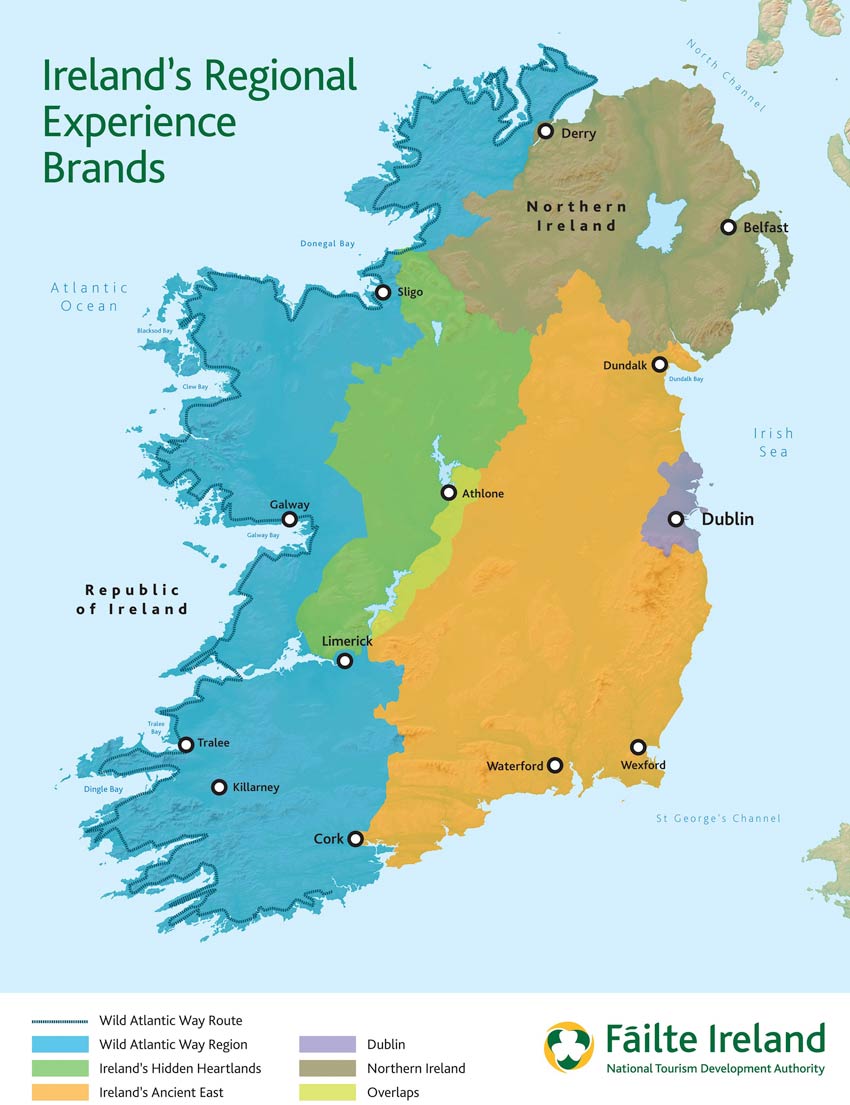
It will complement Fáilte Ireland’s other key brands in the Wild Atlantic Way, Ireland’s Ancient East and Dublin.
“Ireland’s Hidden Heartlands has been developed after months of extensive market testing both here and overseas,” said Paul Kelly, CEO of Fáilte Ireland. “The overwhelming feedback is that visitors from key markets want the opportunity to explore Ireland’s natural gems and rural communities.
“There is also a huge appetite out there for tourists to be active in nature through activities like walking, cycling, angling and boating routes – all of which the Midlands can offer in abundance.”
An initial €2 million has been allocated to start the development stage of the brand, with further funding to follow. This first round of investment will help to develop visitor experiences, support industry development and develop marketing campaigns for the region.
Isle of Man Steam Packet Reports Passenger Increase
#FerryNews- The Isle of Man Steam Packet Company has reported an upturn in visitor numbers last year.
Booking data reports Manx Radio from the ferry operator shows an increase of 3.4% in ferry passengers compared to 2016.
It comes in spite of Cabinet Office figures indicating a sharp fall in visitors to the Island last year - findings which have come under doubt from parts of the tourism industry.
Passenger departures from Liverpool, Birkenhead, Belfast and Dublin are all up, with only a small decrease in those coming from Heysham.
Steam Packet Chief Executive Mark Woodward says continued investment in promotion of the Island, as well an increased UK marketing budget, are factors in the continued growth in numbers.
Royal Cork Joins Port Companies To Promote Cork Marine Leisure At Southampton Boat Show
#Tourism - The Port of Cork, Bantry Bay Port Company and the Royal Cork Yacht Club are joining forces to promote marine leisure in Cork at the Southampton Boat Show.
The three organisations are in attendance at Stand J047 from today Friday 15 to Sunday 24 September tasked with promoting their marina facilities to potential visitors.
They will also be targeting the luxury cruisers and motor yacht market to entice further calls to Cork, Crosshaven and Bantry.
In 2009 the Port of Cork implemented the Leisure and Recreation Strategy for Cork Harbour, with the primary focus of the strategy on water-based leisure and recreational activities in and around the harbour.
Speaking about attending the boat show, Sara Mackeown, commercial marketing executive for the Port of Cork, said: “This is great opportunity to showcase Cork as an ideal destination for marine leisure users.
“Our marina facility in the heart of Cork City is unique and having just completed the new Bantry Harbour Marina there is a great connection now between Cork and West Cork. We are delighted to work closely with the Royal Cork Yacht Club, who have huge experience in the field.”
Cork Harbour offers significant potential for further development of the marine recreation sector as an important source of enjoyment and economic gain for the local residents and visitors, and it is anticipated that attending the Southampton Boat Show will help to promote the marine facilities directly to the desired market.
Gavin Deane, general manager of the Royal Cork Yacht Club said: “The Royal Cork Yacht Club are delighted to be collaborating with both the Port of Cork and Bantry Bay Port Company in promoting the region.
“This year we have seen a significant increase in the number of visiting boats to our marina, the majority of whom have travelled from the south coast of the UK.
“We feel that with this growth in visitors, now is the ideal time to showcase everything that Cork has to offer and Southampton Boat Show 2017 is the place to do it.”





























